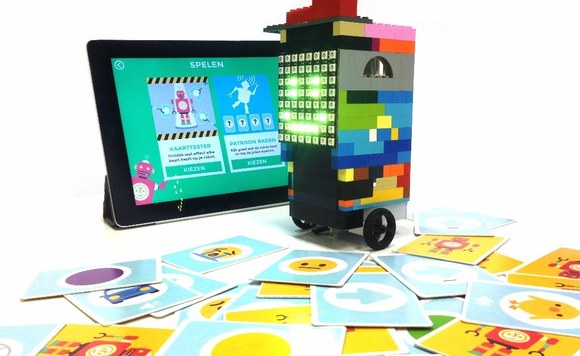3D printing brings video game characters to life
According to researchers from KU Leuven and iMinds, toys that combine online and offline elements offer many exciting possibilities for young children – and their parents. “The world of children’s toys is changing rapidly,” says Professor Bieke Zaman, research coordinator of the WOOPI project. “Tablet computers, for instance, have become very successful, but children still want to play with something tangible as well.”
To study how children between the ages of 4 and 6 interact with online and offline toys, the WOOPI project brought together the expertise of iMinds researchers from KU Leuven and VUB one the hand and Flemish media companies on the other.
“Adults make a clear distinction between their online and offline activities,” Professor Zaman continues. “But for today’s children, the distinction between online and offline is much fuzzier.”
“Parents also have mixed feelings when it comes to digital technology,” Zaman adds. “They want to develop their children’s digital skills, and they are convinced that digital technology is the future. But generally speaking, they favour ‘old-school’ activities such as outdoor football. They don’t want their children to sit in front of a screen all the time.”
With these concerns in mind, the researchers started looking for ways to incorporate more physical play into the children’s digital activities. They took their cue from hybrid toys, which combine online and offline elements.
The immensely popular Skylander video game series, for instance, allows children to transfer information from a physical toy to their computer. As a result, the toy becomes a playable character in the video game.

The researchers gave the kids a robot that teaches them how to code.
© iMinds
Digital research centre iMinds decided to turn the toy-to-screen concept around by using 3D printing. Their developers created software to transform a 2D character on screen into a 3D object. They then used a 3D printer to create an offline, physical version of the character for children to play with.
Hybrid toys come with various advantages. According to Zaman, hybrid toys are not just more fun for children: they can also stimulate the children’s education and boost their digital literacy skills.
“We gave the kids a robot that teaches them how to code,” says Zaman. “This skill is being introduced into school curriculums across Europe. Previous research has also shown that interactive teddy bears are great for kids with autism spectrum disorders. They act as a companion to the child, but their reactions are programmed and predictable.”
The distinction between physical toys and digital apps as two entirely different worlds no longer applies, Zaman argues. "More and more often, tangible toys are integral to online game experiences. The opposite is true as well: online gaming becomes a richer experience when tangible elements are added to the mix.”
But like any other technological invention, the ‘internet of toys’ comes with possible drawbacks. “Toys that react adaptively to children’s actions need to gather data. What happens with these data? Furthermore, the possible impact of the toys depends on the context in which they’re being used. Young children, in particular, need the help and guidance of their parents to get the best results.”





